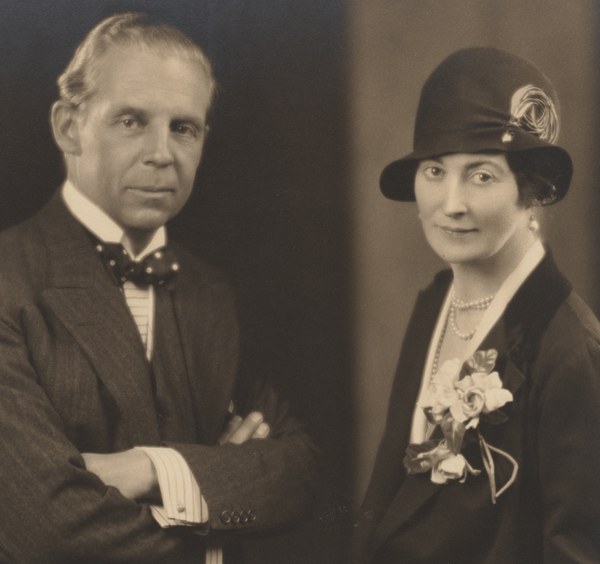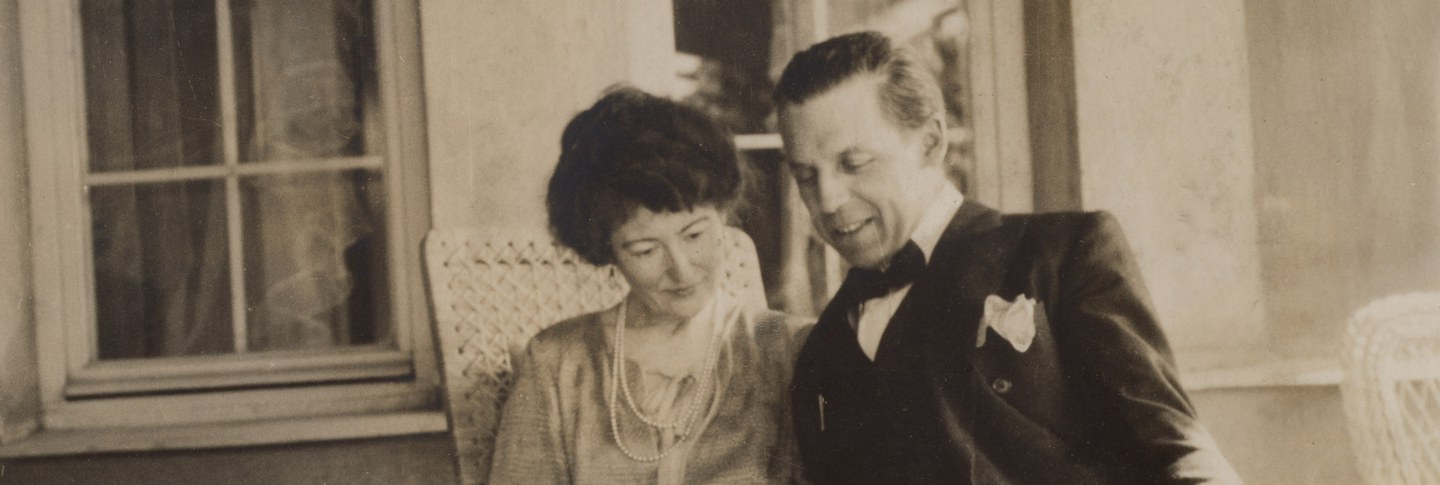
Mildred and Robert Woods Bliss, the founders of Dumbarton Oaks, and their close friend and art adviser, Royall Tyler, and his wife Elisina maintained an active correspondence between 1902 and 1953. Many of these letters document the formation of the Blisses’ collection of Byzantine, Pre-Columbian, Asian, Islamic, and European art. They also discuss contemporary history, literature and poetry, music, politics, and expatriate life. Various friends and acquaintances, such as Bernard Berenson and Edith Wharton, are referenced throughout the correspondence, as are important world events, such as the First and Second World Wars.
The majority of the extant correspondence was given by Mildred Barnes Bliss to Royall Tyler’s son, William Royall Tyler, sometime before her death in 1969. Tyler, then director of Dumbarton Oaks, and Walter Whitehill began work on a publication of this correspondence in the mid-1970s. But this project was not completed, and all existing materials for the publication became an unrestricted gift of William Royall Tyler to the Harvard University Archives (HUGFP 38.6, boxes 1–5) in 1977 and 1979. Robert S. Nelson (Robert Lehman Professor at Yale University and a former senior fellow at Dumbarton Oaks) and James N. Carder (archivist and House Collection manager at Dumbarton Oaks) returned to this correspondence project in 2008.
Navigating the Project
In the right-hand navigation menu, you can find several ways to navigate Bliss-Tyler Correspondence:
Search the Letters by date, sender and recipient, and associated people, places, things, artworks, and themes. Letters can also be read chronologically, by using the next and previous buttons at the bottom of each page. The letters are followed by lists of associated people, places, things, and artwork. Select any of these associated items to search for its other occurrences in the correspondence.
Seven introductory essays provide historical background to the letters, as well as fuller information about the Blisses and Tylers known from other sources. Letters for the period under discussion can be browsed by clicking the plus sign next to each essay. An additional essay introduces Royall Tyler’s service in military intelligence during the First World War.
Annotations provide short identifications for key people, places, and terms mentioned in the project.
Artworks presents a gallery of the paintings, sculptures, textiles, and ceramics in the Dumbarton Oaks Collections that are discussed by the Blisses and the Tylers. Click on any of the artworks, and find a brief description and acquisition history and a link to the full museum record.
We welcome questions or comments about the project, as well as any corrections. Contact us and we will be in touch.
The database will be regularly updated with additional transcriptions, annotations, and artworks.
About the Project
Bliss-Tyler Correspondence provides a searchable database of nearly one thousand letters and telegrams preserved at Harvard University Archives. They are grouped into seven sections, each with an introductory essay that establishes the historical and biographical context of the letters.
The transcriptions were made from the documents in the Tyler Papers archive at Harvard University Archives (HUGFP 38.6, boxes 1–5); they were transcribed in their entirety. Because these documents consist of both the holographic letters and telegrams as well as drafts, carbon copies, and, in certain cases, transcriptions of letters that were not included in the Tyler archive, there are occasional lacunae and missing marginalia and signatures. Where there are lacunae and where words are illegible or questionable, this has been noted with bracketed comments [ ]. Spelling errors and British and Continental spelling conventions have been retained, and [sic] has been inserted where the meaning of the word is questionable as well as to clarify the accurateness of the transcription. Frequently referenced people, places, artworks, and other objects are linked to annotation notes within the transcription text.
By making these documents accessible, the authors hope that scholars and others interested in art history, history, and collecting will benefit from both the transcribed documents and the annotations.
